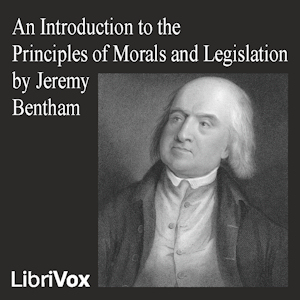Introduction to the Principles of Morals and Legislation

Author(s)
- Jeremy Bentham
Jeremy Bentham's Introduction to the Principles of Morals and Legislation, a classic text in modern philosophy and jurisprudence, first published in 1789, focuses on the principle of utility and how this view of morality ties into legislative practices. Bentham's ambition in life was to create a complete Utilitarian code of law. The philosophy of utilitarianism argues that the right act or policy is that which would cause "the greatest good for the greatest number of people", also known as "the greatest happiness principle", or the principle of utility.
Bentham's principle of utility regards "good" as that which produces the greatest amount of pleasure, and the minimum amount of pain; and "evil" as that which produces the most pain without the pleasure. This concept of pleasure and pain is defined by Bentham as physical as well as spiritual. Bentham writes about this principle as it manifests itself within the legislation of a society. He lays down a set of criteria for measuring the extent of pain or pleasure that a certain decision will create.
Bentham argues that certain unnecessary laws and punishments could ultimately lead to new and more dangerous vices than those being punished to begin with. He is of opinion that the concept of the individual pursuing his or her own happiness cannot be necessarily declared "right", because often these individual pursuits can lead to greater pain and less pleasure for the society as a whole. Therefore, the legislation of a society is vital to maintaining a society with optimum pleasure and the minimum degree of pain for the greatest amount of people. (Summary adapted from Wikipedia)
Meta-Coordinator/Cataloging: Jc Guan & Anna Simon
